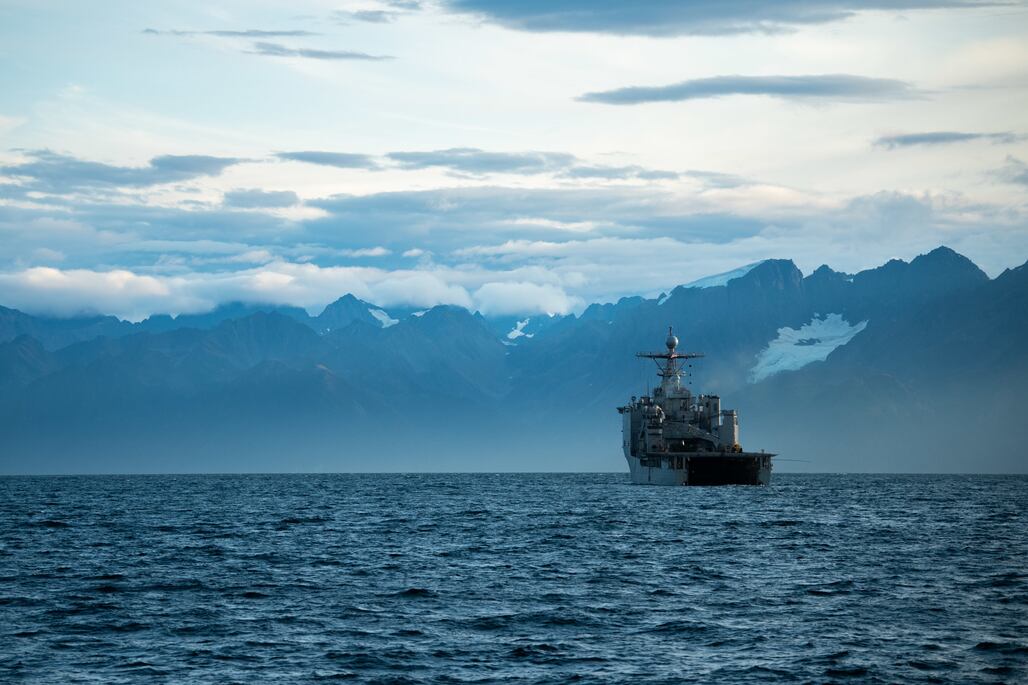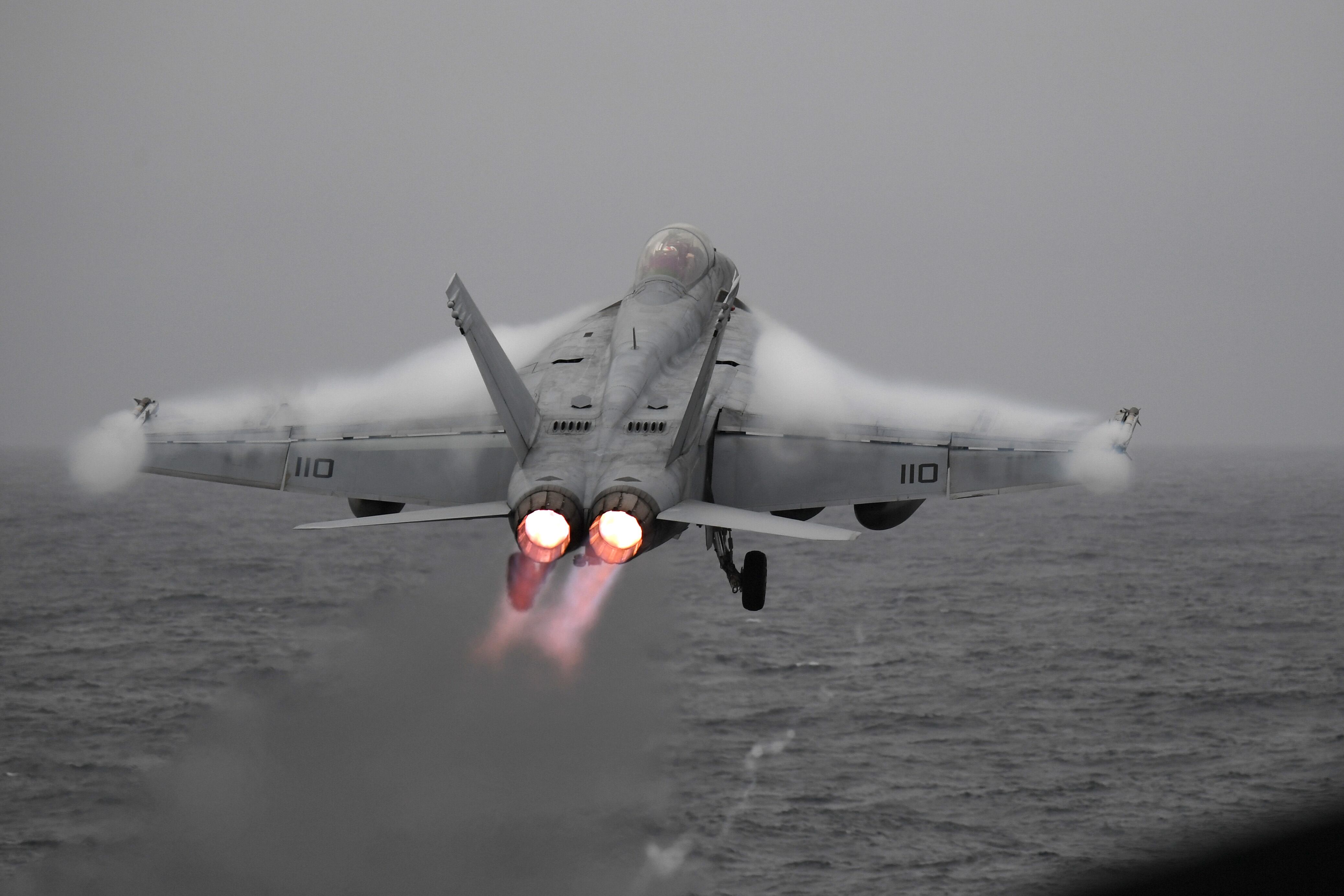Greeted by rough waves, guided-missile cruiser Normandy and the destroyer Farragut nosed inside the Arctic Circle this week, part of an ongoing effort by the Navy to rediscover its sea legs up north, U.S. 2nd Fleet leaders said Wednesday.
Second Fleet commander Vice Adm. Andrew “Woody" Lewis told reporters that the crews of the Virginia-based cruiser and the guided-missile destroyer — which is homeported in balmy Florida — are getting accustomed to sailing seas that often become cold and windswept.
“Successful operations in the Arctic require practice,” he said.
Navy officials declined to pinpoint where in the Arctic his warships are roaming, but 2nd Fleet stood up an expeditionary Maritime Operations Center in Keflavik, Iceland.
Helmed by Capt. Chris Slattery, it’s coordinating the operations of the Normandy and Farragut but guided-missile destroyers Forrest Sherman and Lassen won’t join them above the Arctic Circle.
The four form a Surface Action Group controlled by 2nd Fleet. They were supposed to deploy as part of the Harry S. Truman Carrier Strike Group but the flagship flattop returned to Norfolk last month following reports of electrical glitches.
RELATED

In an era of receding Arctic sea ice — what scientists say is a symptom of global climate change — military leaders anticipate a growing presence of Russian and Chinese forces in northern waters, something Pentagon planners want to match.
But to operate in the polar region, sailors and their offices must master navigation, logistics, communications and medical support in cold and austere areas, Slattery said.
The Navy resurrected 2nd Fleet in 2018 to focus more forces on the North Atlantic and portions of the Arctic, what was an underwater thoroughfare for Soviet submarines during the Cold War.
Lewis said Wednesday that the SAG’s deployment has yet to encounter any Russian vessels.
“I’m sure the longer we stay up there the opportunity would increase…but for now the Normandy and Farragut are training,” Slattery added.
RELATED

When Truman entered the Norwegian Sea nearly a year ago, sailors brought baseball bats to bash ice off the superstructure.
But for personnel trying to conduct flight operations, it wasn’t just plummeting air temperatures during a 12- to 14-hour workday that became their enemies, but also the wind.
“Even the strongest sailor will have a hard time with it,” Lewis said.
And while his warships are built for rough conditions, he conceded that the Arctic pushes his vessels “a lot closer to the limit than we traditionally do.”
In the Arctic, mundane chores like refueling become expeditionary efforts, Lewis said. He pointed to a recent trip by the guided-missile destroyer Gravely that saw the ship travel 1,800 miles with no opportunity to top off.
The Royal Danish Navy’s command and support ship Absalon conducted exercises off the coast of Greenland in mid-August with Gravely.
“If you look at the map of the Arctic…and you look at what we have for supportability in the Arctic…it’s not much,” he said.
Slattery said that Normandy, Farragut and crews from Naval Air Station Jacksonville’s Helicopter Maritime Squadron 72 are “trying to do flight operations in those higher seas.”
“Tomorrow they’re going to be doing a replenishment-at-sea,” he continued. “High seas make it much more difficult…but it’s something we have to do regardless.”
Geoff is the managing editor of Military Times, but he still loves writing stories. He covered Iraq and Afghanistan extensively and was a reporter at the Chicago Tribune. He welcomes any and all kinds of tips at geoffz@militarytimes.com.




